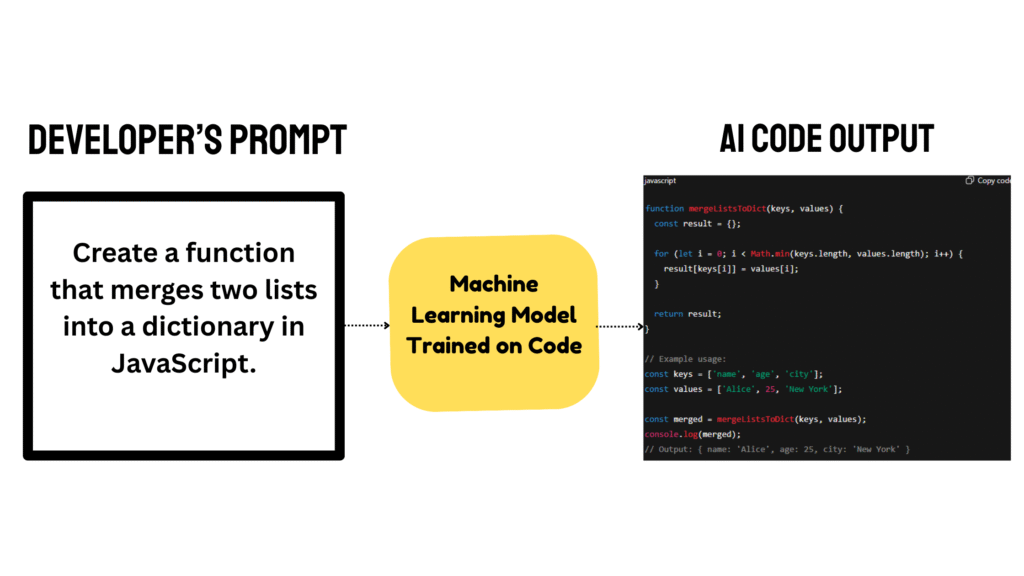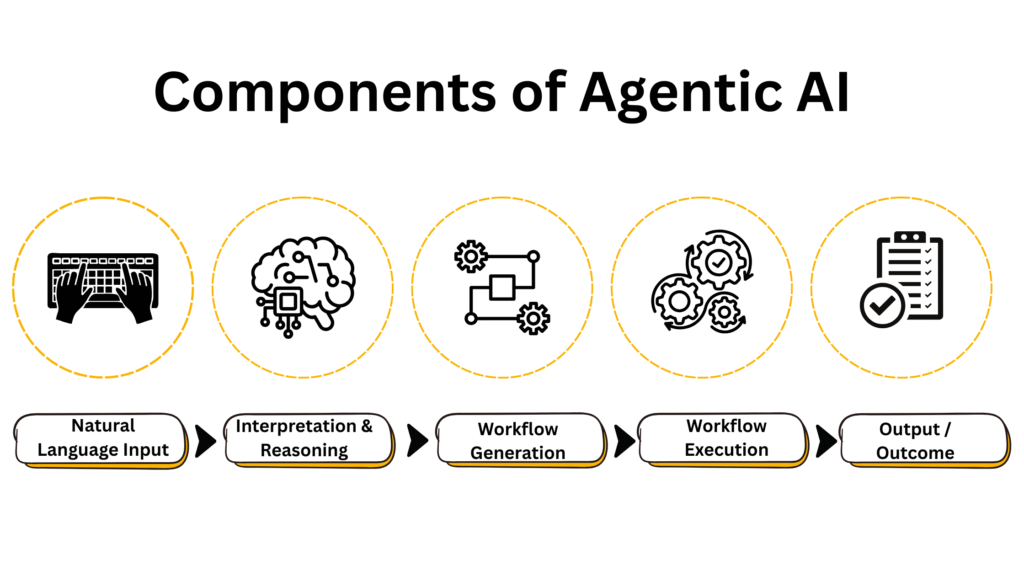For 2025 and beyond, there are some influential technology innovations expected to level up the industry dominance and accelerate the success quotient for businesses. In order to stay ahead of the crowd, developers must adopt every emerging technology that suits their purpose.
In this article, you will get a clear insight into 10 new technology trends that software developers must watch out for. Read along till the end, and you will have a list of potential skills you must master to thrive in your career as a developer.
1. AI Code Generation

With AI technology picking up its pace and dominance in software development, developers are now using dedicated tools to generate code snippets. The AI Tools like ChatGPT or GitHub Copilot can help developers speed up the overall development cycles and boost productivity.
These tools enable software developers to leverage ML models for writing codes based on specific instructions. It means, an AI tool will be prompted with description of what a code is supposed to do, and an accurate snippet will then be generated.
The advanced large language models powering the AI code generation process are trained on big datasets having publicly available codes. Such models then make use of NLP to interpret developers’ instructions and use deep learning algorithms for generating code suggestions.
2. Agentic AI

Beyond gen-AI, artificial intelligence has marked its efficacy in business systems in several other transformative ways. Agentic AI is one of those technologies that can enable a business system to function with enhanced autonomy.
Developers need to design the agentic AI systems, making them capable of performing complex business tasks or making decisions independently, without human intervention. Such systems can also adapt themselves to new challenges without the need for constant human oversight.
Prior to 2025, the large language models or AI tools relied mostly on predefined workflows or user inputs. Agentic AI, on the other hand, brings in a new empowerment for your business systems. It plans and acts proactively to achieve the said objectives.
3. Low-Code & No-Code Platforms
The use of low-code and no-code software development platforms has picked up pace, as they enable businesses to create apps faster. Such platforms have pre-built components and visual interfaces that support faster development.
Developers, when using these tools, can eliminate the need for extensive coding and reduce the reliance on using more engineering resources. Adopting low-code or no-code platforms will help developers respond to market demands faster and with more agility.
Add logo: FlutterFlow, Power App, Bubble.io?
4. Quantum Computing
A technology for the future, quantum computing, is meant to revolutionize industries with faster solutions to complex challenges. The purpose is to use quantum mechanics for processing information way faster than a classical computer, especially for certain tasks.
Developers need to master the integration of quantum systems with cloud infrastructure and enable offloading of the heavy processes. This way, the overall efficiency will increase! Even though quantum computing is still under development, it holds the potential to reshape the way businesses handle task optimization and management of complex datasets.
5. Extended Reality (XR)
One of the new trends in technology, extended reality (XR), is an in-demand tech used by developers for integrating immersive experiences for users. There is a prediction that XR will soon be a mainstream technology in the next five years.
Building apps that can deliver full immersive experiences through a headset or overlaid real-world images will be easier with XR. Some of the best use cases of this technology include feature inclusions like virtual try-ons, VR training, GPS, games, and more.
6. Progressive Web Apps
In order to save on cost and time, brands are now seeking PWAs (Progressive Web Apps) alongside the native apps. PWAs are hybrid applications combined with the best features of web and mobile apps.
Users can access the PWAs using web browsers but can also avail native app-like functionalities such as push notifications or offline access. As PWAs are built on a single codebase, it simplifies the overall development effort and associated maintenance costs.
Developers need to master this trend and be able to build powerful PWAs for adhering to the industry demands.
7. Edge Computing
The concept of edge computing is meant to process data closer to the source where it was generated. It is an important technology, especially for the apps that require real-time decision-making and processing without much latency.
This technology is critical for applications like healthcare monitoring, smart factories, autonomous vehicles, and more. Several industries are quickly adopting edge computing to encourage better optimization of production lines, improved predictive maintenance, and enhanced remote monitoring features.
Edge computing also supports the cloud infrastructure through seamless data management and offloading of workloads, all without reliance on central servers.
8. 5G for Real-Time and Connected Applications
The enhancement to 5G networks all across the globe has transformed the way apps are built or experienced. Users expect their apps to perform faster and support reliable connectivity. High-speed data transfer and ultra-low latency are a few traits of 5G, supporting several real-time industry applications.
Developers can now create connected software solutions to power autonomous vehicles or smart city technologies that demand real-time communication and data processing between devices.
9. Python and JavaScript
Programming languages are among the most crucial technologies that align with the latest software development trends. Python and JavaScript are leading the race as the best languages for developers to build productive and high-performance apps.
Python, being versatile and simple, is mostly recommended for machine learning, automation, web development, and data analysis. JavaScript, on the other hand, is used for creating Web3.0 apps, adding more responsiveness and dynamic appeal.
Not just that, but JavaScript frameworks like React Native are also used for building cross-platform mobile apps or desktop applications. Developers mastering the use of Python and JavaScript will be able to build robust & interactive web apps by channelizing the strengths of both languages.
10. DevSecOps
Not specifically technology, but a method of approach, DevSecOps is meant to embed security across all stages of software development. Starting from design to delivery, the DevSecOps approach will shift security practices to the left and prioritize automated checks into the development workflows.
Developers must learn & implement DevSecOps for identifying vulnerabilities at the earliest and reducing the risk of data breaches. Use of the right tools and technologies under DevSecOps will facilitate automation of code analysis, security patching, and vulnerability scanning.
Conclusion
These are the 10 best emerging technologies that every developer should watch out for, not just for 2025, but for years to come. Most new and existing businesses are now eager to adopt the new technologies to evolve their operations and brand acceptance.
In this quest, they will need developers who are proficient in using the latest technologies, as listed above, and building the best software solutions that suit their purpose. Embracing these new trends in technology will offer you a promising career in the foreseeable future.



